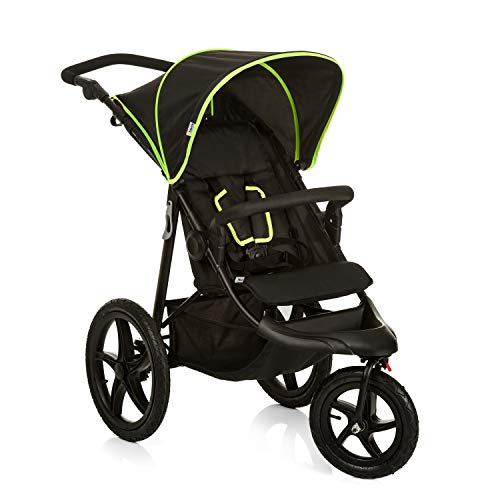A Peek Inside The Secrets Of Pushchair Single
페이지 정보

본문
 What is a Pushchair single seat buggy?
What is a Pushchair single seat buggy?A single pushchair is designed to carry a single stroller with bench seat child (although some can be used as early as birth with a car seat or carrycot). Some are best lightweight single stroller and can transform into double.
It is a popular choice for families because of its sleek, modern design and features, such as height-adjustable handles and a large shopping basket. It also has machine-washable fabrics and the footmuff, which is an essential accessory for colder weather.
Convertible
If you're seeking one stroller that will grow with your child think about a convertible model. This type of stroller features a hammock seat which can be converted into an infant carrycot. It's a good choice for infants. It's also easy to fold from the handlebar, and light to drive.
A first of its kind, the Larktale crossover is a stroller/wagon that easily converts to a double-seater with no tools required. It comes with numerous features that make it a good option for parents, including a large undercarriage and an organizer hanging by the push bar in both modes. There are some drawbacks such as the confusion of the zipper that connects to the back of the seat 1 in wagon-mode, and the size of cup holders.
Brakes
A good single pushchair will come with two brake systems. The hand brake is usually an incredibly small lever-like device on the chassis. You can flick it down to stop the pushchair, and then push it back up to continue. This is helpful in urban terrain in which you might need to stop quickly or on the pavements of malls where pedestrians could be present. Another braking system is the front wheel braking system that is used on the top of the line pushchairs like the phil&teds dash or the Bugaboo Cameleon 3 which is activated by pushing the pedal in the same way as the brakes on bicycles. This is especially useful when you're running or walking through rough terrain as it will stop the pushchair instantly and ensure that your child is safe.
The left coupling system 171 that connects the rear leg 57 as well as the front leg 19 has a rear leg mounting bar 173 to which the rear leg 57 is to a gear 175 mounted on a side surface 163 of the housing 33 disposed within hub 3; a bushing 177 coupled to the gear 175 and extended through a slot 179 provided at the end of the mounting bar 173 and a cable 183 that is designed to wrap around J-shaped spool component 181 as well as the post 31 of the front leg 19. The left coupling system 171 that is used for the rear leg 57 as well as the front leg 19 comprises a rear leg mounting bar 173 to which the rear 57 is fixedly connected; a gear 175 mounted on a side surface 163 of the housing 33, which is positioned within hub 3; the spool component 181 as well as the post 31 of the front leg 19 are wrapped around the J-shaped spool part 181 in the slot 179 located at the end of the mounting bar 173 and coiled cable 183.
The brake system 215 consists of the first end, 227 that is designed to be in contact with the brake cams in the second position. It also has a second end 229. The second end of the brake lever 229 has a plurality teeth 231. The teeth are designed to engage the teeth of a gear 233 that is driven by a stroller 1's first rear wheel 59. When the brake lever is depressed the braking cam blocks rotation of the first rear wheel 59 and the movement of the stroller 1. The braking system can be operated manually.
Seat unit/carrycot
A single pushchair is a type of infant travel unit for older babies (6 months or more) who are just beginning to sit and look around the world. They often have the option to convert into a pram. Prams are more modern and designed for babies to toddlers. They are padded to ensure your child is comfortable.
Many pushchairs work with car seats, allowing you to create a travel bundle that allows you to transfer sleeping babies from your car into the pushchair. Some pushchairs have a carrycot that is perfect for infants. Others come with an integrated seat that can be used when your child is ready to get out of the carrycot.
The majority of pushchairs that are 'from birth' provide a option of facing directions for the seat unit/carrycot. either facing the parent to bond and reassure baby or world facing so they can discover the world. Some even have the option to connect an additional carrycot or infant carrier, or ride-on board to accommodate growing families.
A good pushchair should be able to move smoothly over various terrains, such as pavements, grass, and rough surfaces. A sturdy frame that's designed to last is crucial, and so is the choice of tyres. Certain tyres require air to be added periodically, while others are made of alternative materials such as EVA and PU, which provide an enjoyable ride.
It's worth investing money in a pushchair that is easy to clean and maintain. You can clean up spills and crumbs using a baby-wipe. However, should you need to get rid of more stubborn marks, use the hot air from a hair dryer for 1 to 2 minutes.
- 이전글10 Things That Your Competitors Inform You About Friction Stay Hinges 24.10.18
- 다음글Unser Trüffelsalz Setzt Maßstäbe! 24.10.18
댓글목록
등록된 댓글이 없습니다.
